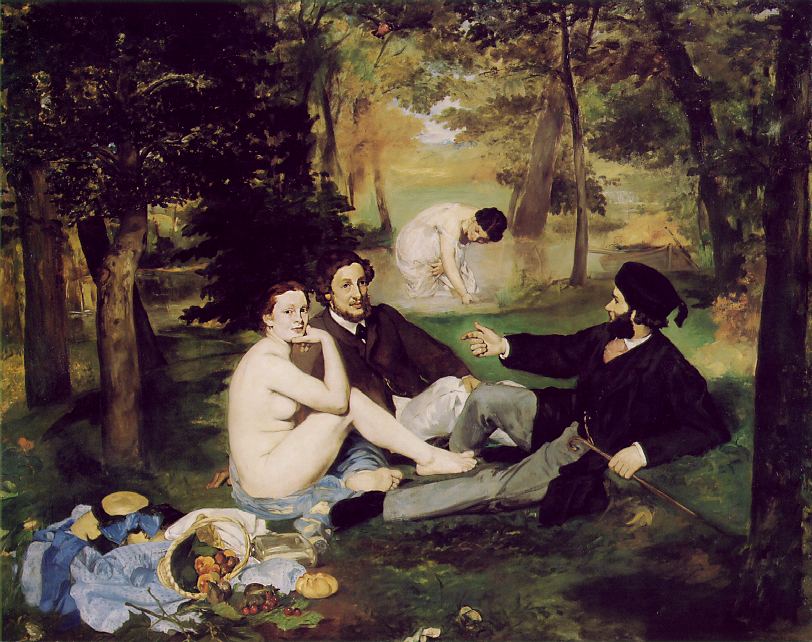MANET'S DEJEUNER SUR L'HERBE
In
1850, at about the time Manet started to paint, young artists in Paris could
expect to succeed only through the official Academy exhibitions known as Salons,
whose conservative juries favoured biblical and mythological themes and a polished
technique. Ironically then, it was his rejected painting Dejeuner sur l'herbe
(1863) which brought him his much sought after recognition. The Salon jury of
1863 had been exceptionally brutal and thousands of paintings had been refused.
To counter these refusals, the Salon des Refuses was established and it was
here that Dejeuner sur l'herbe (also known as the Luncheon on the Grass) was
exhibited. Although influenced by Raphael and Giorgione, Dejeuner did not bring
Manet laurels and accolades. It brought criticism. Critics found Dejuener to
be anti-academic and politically suspect and the ensuing fire storm surrounding
this painting has made Le Dejeuner sur l'herbe a benchmark in academic discussions
of modern art. The nude in Manet's painting was no nymph, or mythological being...she
was a modern Parisian women cast into a contemporary setting with two clothed
man. Many found this to be quite vulgar and begged the question "Who's for lunch?"
The critics also had much to say about Manet's technical abilities. His harsh
frontal lighting and elimination of mid tones rocked ideas of traditional academic
training. And yet, it is also important to understand that not everyone criticized
Manet, for it was also Dejeuner which set the stage for the advent of Impressionism.



